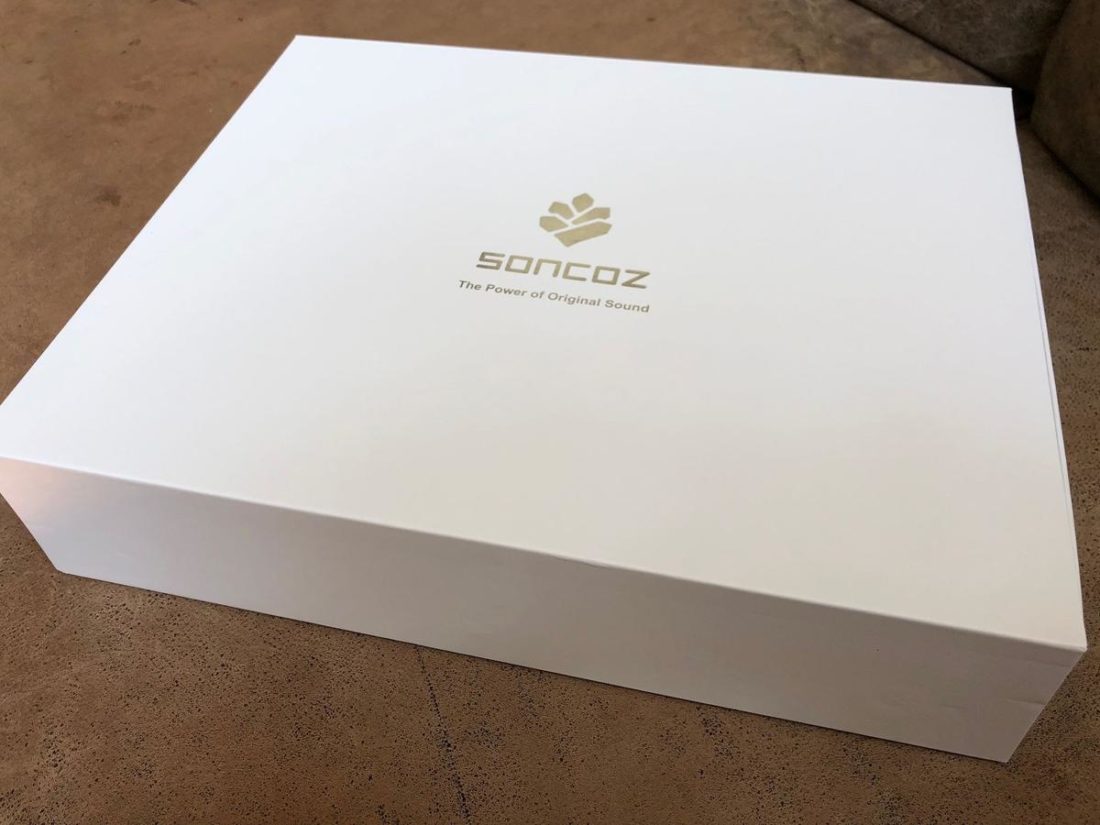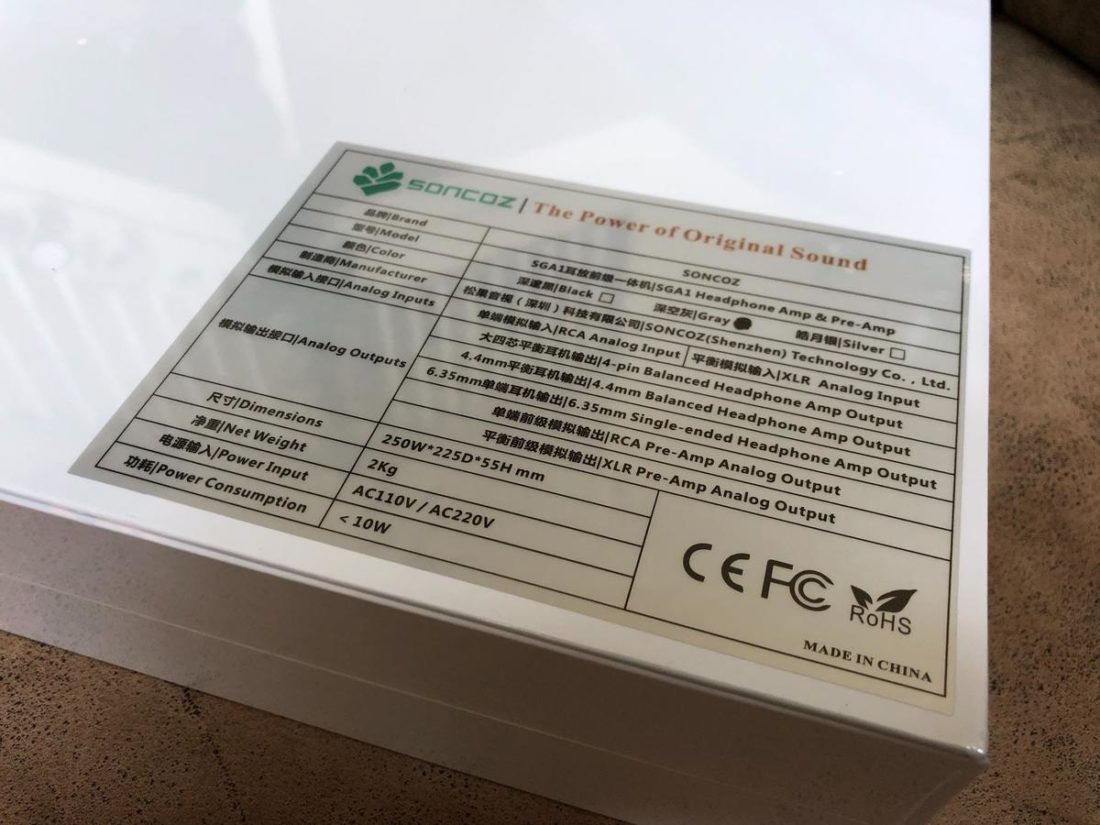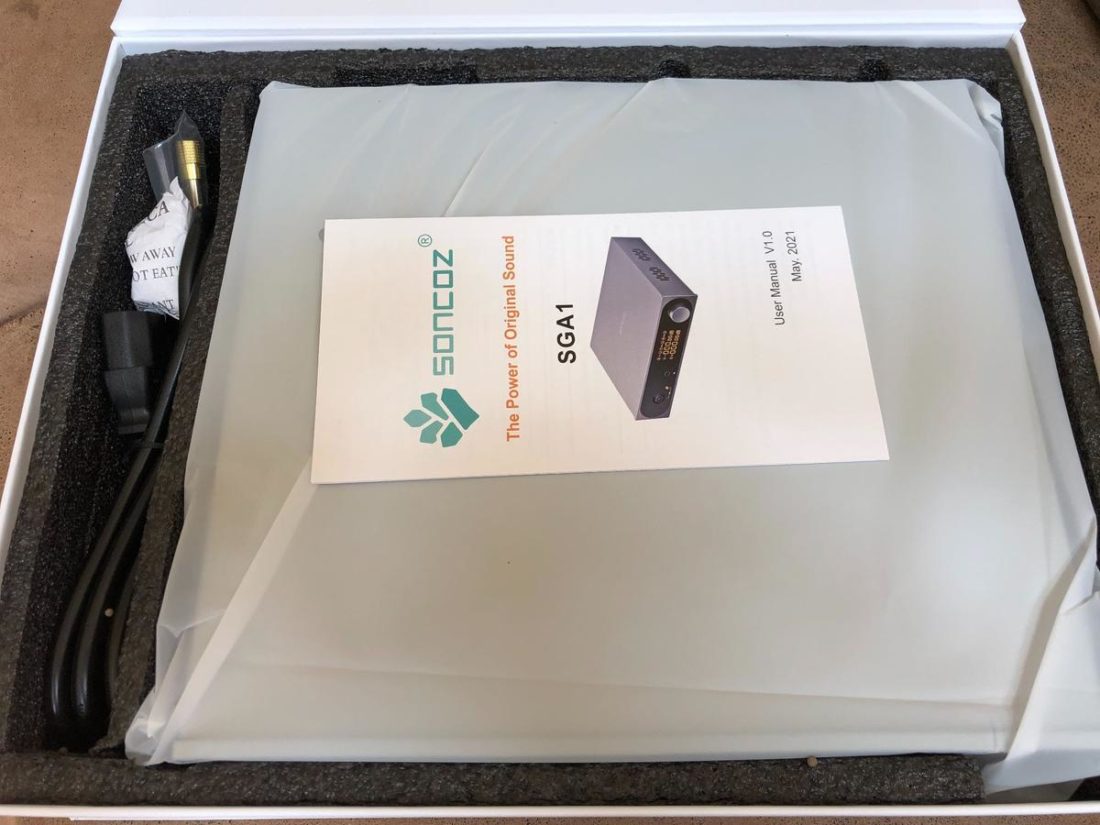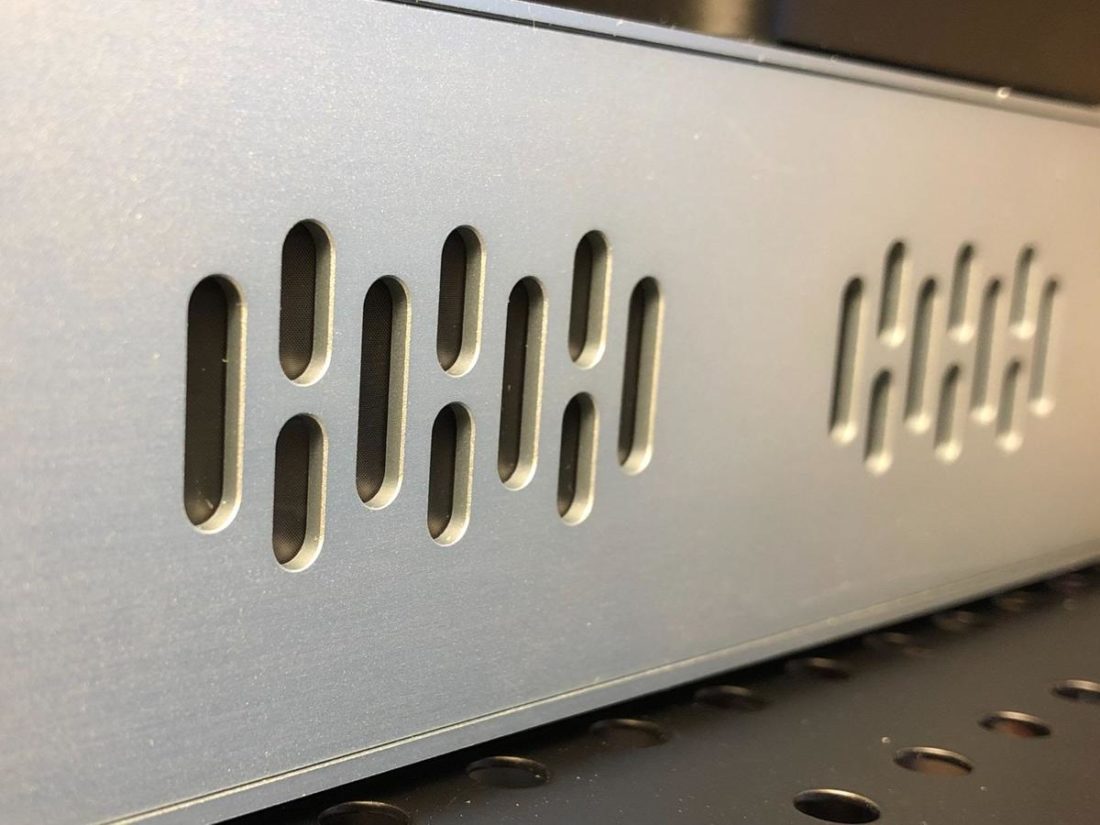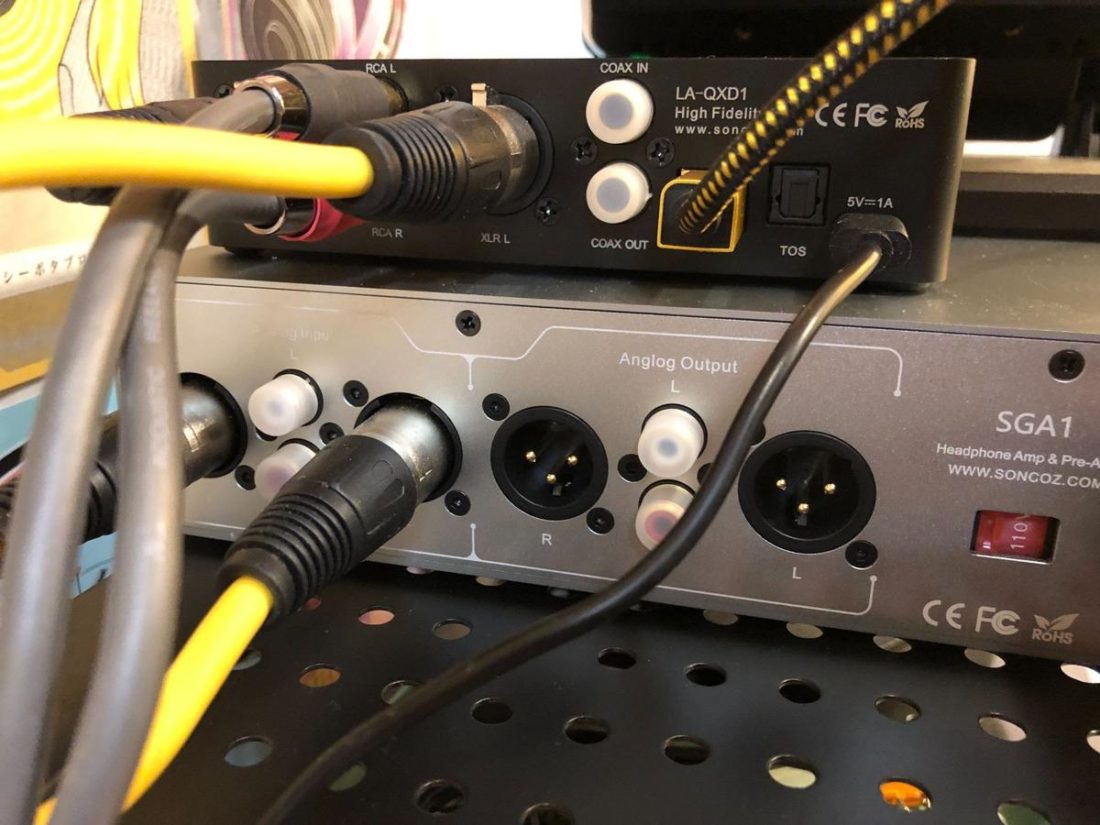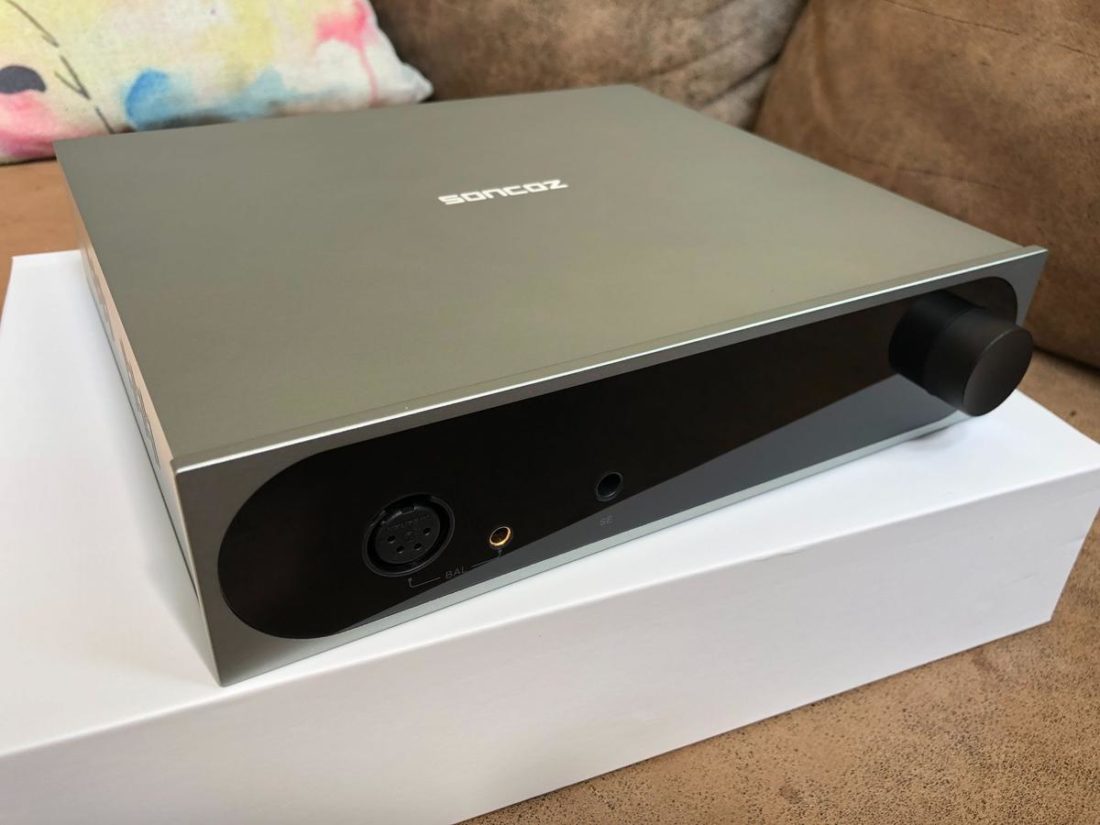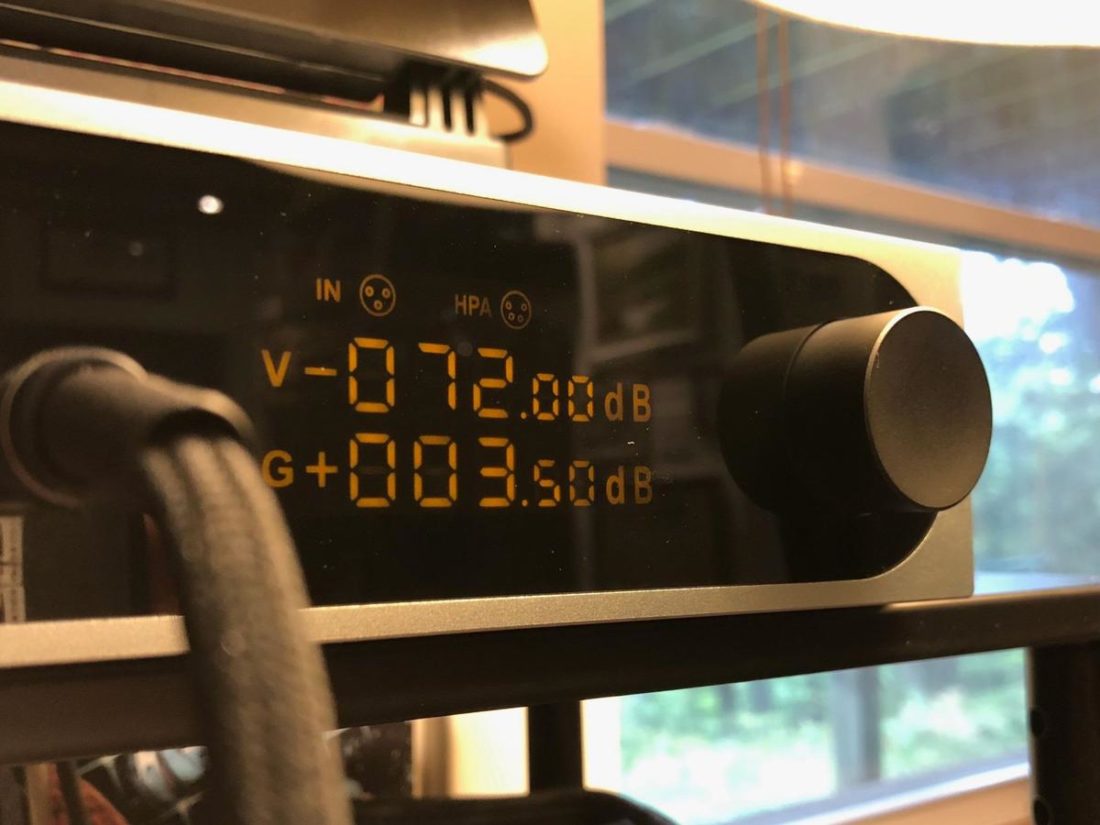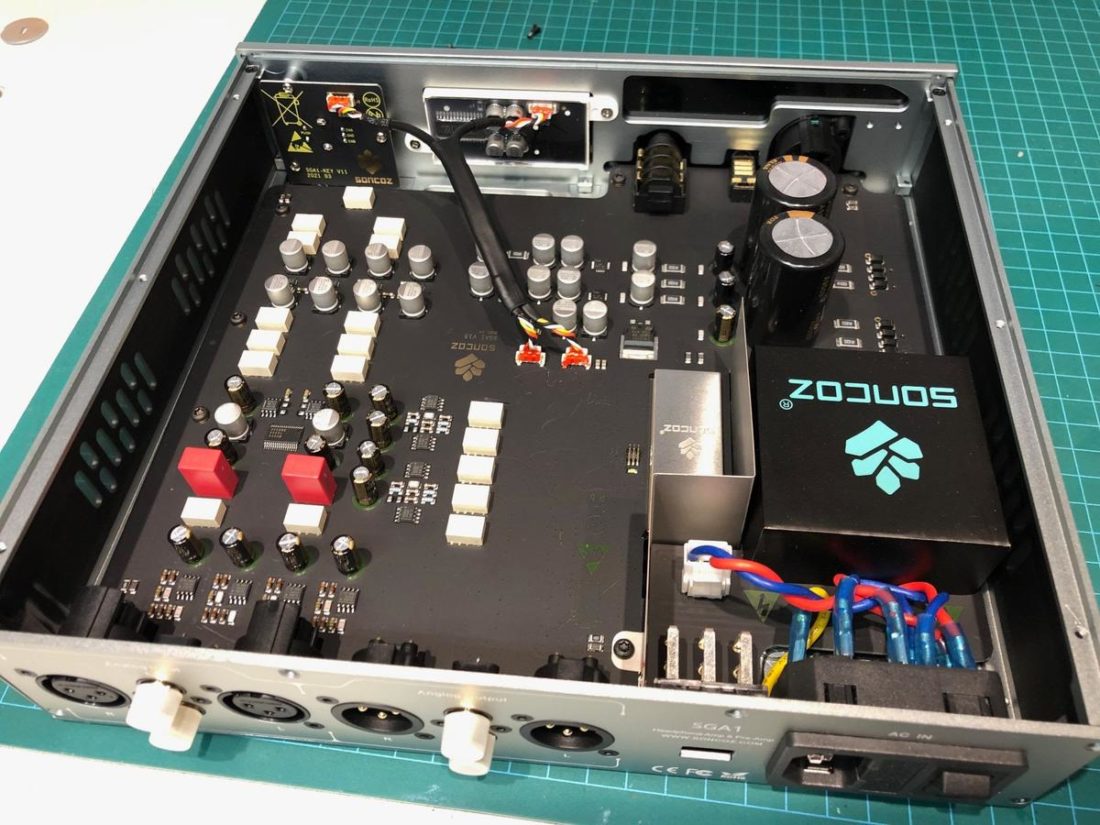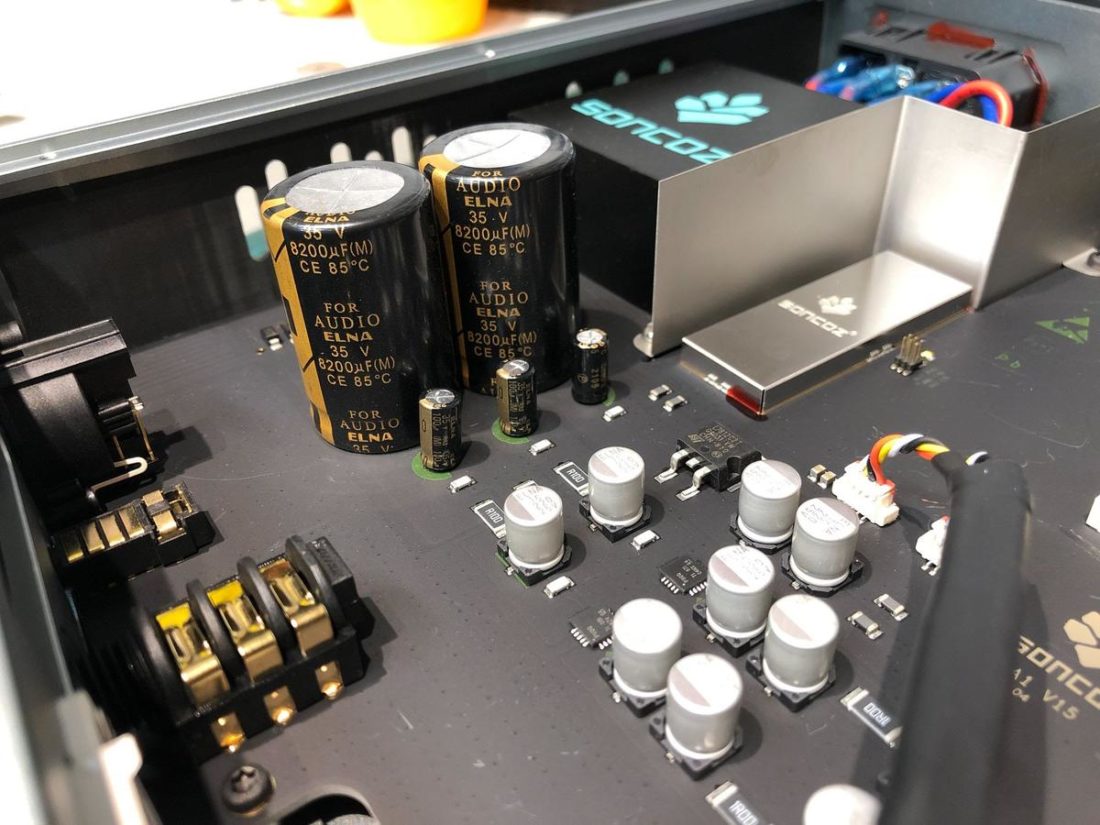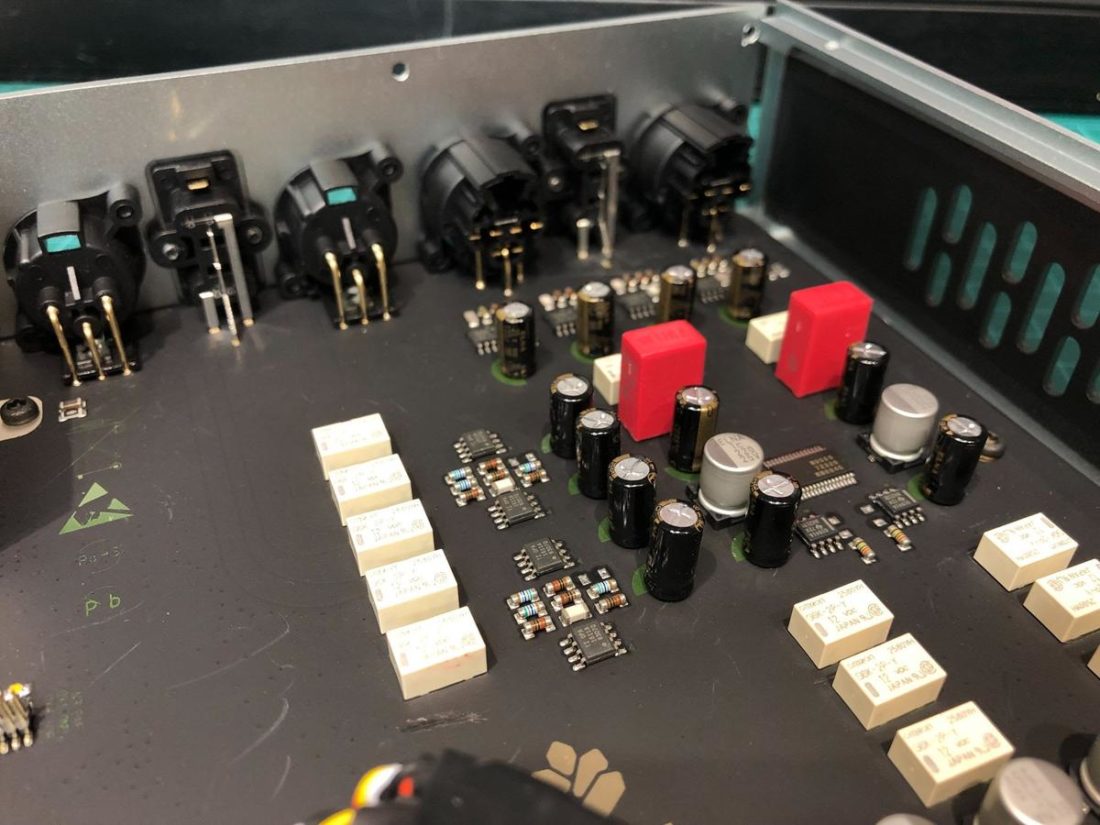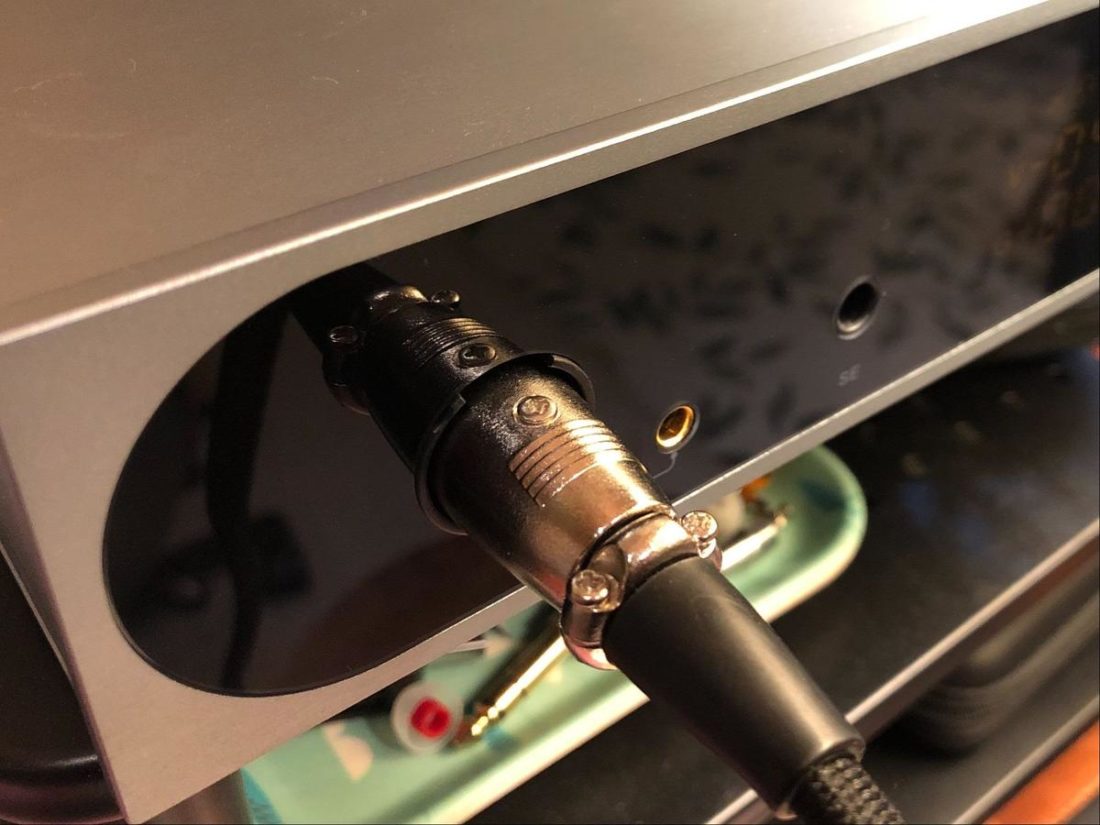SONCOZ is a name that only the most entrenched of headphone enthusiasts are likely to know. SONCOZ is the brainchild of Ben1987 (his username on the Audio Science Review forums) who is the designer of the much-lauded Khadas Tone Board DAC. Ben’s Tone Board and later SONCOZ branded DACs are known for terrific measurements, reasonable prices, and innovative balanced output solutions. Up till now, what was clearly missing from the SONCOZ lineup were matching amplifiers for desktop stacking. New to the market is the SGA1 balanced amplifier/pre-amp, sharing the same design esthetic as the flagship SONCOZ SGD1 DAC. Priced north of $500USD, the SGA1 is chock full of high-quality audio components, features a truly unique interface, distinctive styling, and is intended to compete with the very best desktop headphone amplifiers. The Tone Board DACs were first-try innovative home runs. Can SONCOZ recapture that success with Ben’s debut high-end dedicated amplifier design? Leave your expectations at the door, and prepare to experience one man’s take on what the perfect amp should be.
Company Overview
SONCOZ is the brand name of Shenzhen Technology Co., Ltd. founded in March 2019 and located in Shenzhen, China. SONCOZ is the Chinese homophone of ‘pine cones’ and is a simplification of the spelling of English words SONG and COZY. The turquoise SONCOZ logo reflects the pine cone theme, and is intended to depict “the process of thriving.” “The Power of Original Sound” is the slogan of the SONCOZ brand and describes “the internal driving force of SONCOZ product design and innovation.”
Technical Specifications
THD+N: <117dB (SE), <118dB (Balanced) Frequency Response Range: 20Hz-20kHz. Dynamic Range: <124dB (SE), <126dB (Balanced) Signal To Noise Ratio: <92dB (SE), <91dB (Balanced) Crosstalk: <118dB (SE), <120dB (Balanced) Output Voltage: 4.0Vrms (SE), 7.8Vrms (Balanced) Output Impedance: 0.1 ohm (SE), 0.05 ohm (Balanced) Noise: 1.8uVrms (SE), 3.6uVrms (Balanced) Output Power SE: Up to 420mW @33 ohm, up to 210mW @300 ohm, up to 105mW @600ohm. Output Power Balanced: Up to 420mW @33 ohm, up to 840mW @300ohm, up to 420mW @600ohm. Colors: Deep black and deep silver. Additional Features: Ultra low-noise Muses OPAMPs ELNA and WIMA capacitors Linear & LDO regulators Custom toroidal transformer with multi-layer shielding Muses 72320 electronic volume and gain control Memory function for volume and gain Fully balanced circuitry Gold 4-Layer PCB OLED display
Packaging
A plain white cardboard box, with a small specification decal on the bottom and a logo on the top, comprises the totality of the SGA1 packaging. The device is securely protected within a foam interior, and the meager accessories are contained in a side cut-out.
In the box
SONCOZ SGA1 Power cable 3.5mm to 6.35mm adapter Paper manual
No nice-to-have accessories such as remote control, interconnects, or vertical stand are included. Other companies such as iFi, SMSL, and Topping are doing a better job bundling accessories to provide a more premium experience. The SGA1 packaging feels a bit lean and budget-oriented compared to other amps at this price. This focus on internal componentry over the ‘extras’ is to be expected for Ben’s creations. You may recall that the original Tone Board Dac was sold as a circuit board without even a case. If a compromise is to be made (to keep the price reasonable) between packaging/accessories or high-end internal componentry, I’ll happily accept a modest parcel any day.
Design
The SGA1 is a rather bulky desktop device, measuring approximately 225mm (d) x 250mm (w) x 55mm (h) and weighing almost 2kg. It’s a multi-panel, matte-finished aluminum box that looks and feels premium, if not overly noteworthy beyond the attractive vent patterns on the sides. Further limiting its desktop positioning flexibility is the notable omission of a front power switch. The only way to turn the SGA1 on and off is by the rear physical switch near the back-left corner. Those wanting to fit the SGA1 in a component stand may be put off by this limitation. The rear panel is pretty much par for the course for a combined preamplifier/headphone amplifier component. It has 3-pin XLR and RCA inputs and outputs, IEC power socket, input voltage selector (mine was set to 220V on arrival so pay attention before you plug it in), and the aforementioned power switch. The front panel couldn’t be any more streamlined, with 4-pin XLR and 4.4mm balanced outputs, 6.35mm SE output, OLED screen, and a single multi-use knob, all contained in a rounded rectangular black glass panel. I expect the orange LED screen will be a controversial inclusion for many users. The multi-segmented display simultaneously displays both volume and gain settings and dims automatically after about 45 seconds or so, not that it’s quite bright enough to read easily in direct sunlight at the initial brighter setting.
Interface
Beyond just volume and gain, the screen constantly displays input and output settings. SONCOZ decided to forgo a standard menu system, and the user must select and change all settings on the default screen using the rotary controller knob. It’s taken me quite a while to acclimate to how it works (unlike the intuitive menu systems I’ve recently encountered on SMSL devices). Rotate the knob to adjust the volume. Press in to access the other settings (“V” for volume will flash). Rotate the knob to switch between “G” (gain) and input and output settings. Press again to select and rotate to change the setting. Press in again to confirm. It seems to take a second or so to register a selection, so this can lead me to push twice and accidentally exit the desired option – patience is required. Holding the knob in for 6+ seconds will reset the SGA1. A feature that initially attracted me to the SGA1 is the ability to adjust the volume in 0.25dB steps, and the headphone output gain (from 0-6dB) in 0.5dB steps (preamp output gain from 0-7dB). Additionally, the volume and gain value of each combination of inputs and outputs are saved even if power is disconnected.
Internals
All the volume and gain options are thanks to the choice of implementing a MUSES 72320 digital volume control (resistance ladder circuit). The benefits of this design are perfect channel balance and accuracy from 0dB to -110dB, something that analog controls can only dream about. However, the digital volume control comes with its own set of limitations. Both Audio Science Review and GoldenSound have put the SGA1 through their comprehensive slate of measurements and discovered some interesting results. What appears to be going on is that the higher voltage of the balanced input means that the 0dB gain setting actually translates to an increase of 6dB using this connection (something which is often compensated for in other amplifiers). Additionally, the digital volume control introduces significant distortion levels (2nd and 3rd harmonics), which will add a certain flavor to the sound. This may translate to a positive listening experience for the user, or not. There is a digitally controlled volume IC which must be raising distortion when you reduce volume.” – Audio Science Review …as the volume control chip is used, we see the 2nd and 3rd harmonic shoot up and we lose over 10dB of SINAD. Performance is still good, but it’s a shame to see what otherwise seems to be a fantastic amp limited by the volume control. …it is showing near equal parts 2nd and 3rd harmonics, and also retains high SNR, means that actually this could contribute to quite an enjoyable sound. Typically high THD also comes with poor SNR and/or high IMD, which isn’t the case here, you get a little bit of harmonic ‘flavouring’ without much downside. When using the amp’s volume control the harmonics are up to 20dB higher.” – GoldenSound The remainder of the internal component choices seem top-notch: Muses OPAMPs (OPA1611, OPA1641, OPA1622 – headphone output buffer, OPA1661, and OPA1641), ELNA and WIMA capacitors, anti-pop relay, and an internal toroidal linear power supply.
Power Output
Using the balanced output, the SGA1 is certainly intended to provide sufficient power to high impedance headphones (840mW @300ohm, 420mW @600ohm), but this drops significantly using the SE headphone output (210mW @300 ohm, 105mW @600ohm). It seems if you want the extra power, investing in a balanced cable will be necessary. Power drops and distortion increases significantly with low impedance loads, so deceptively power-hungry, low impedance planars may not be a great match with the SGA1. As is typically the case, this is truer at very loud listening volumes, so those who prefer lower volumes are less likely to run into matching issues.
SONCOZ SGA1 Sound
The SGA1’s sound comes across as a touch warmer than truly neutral, and with a clean sonic signature. It doesn’t feel overly ‘digital’ or harsh sounding, and for the most part seems to keep out of the way of the music, delivering it without overt coloration. It’s not quite the sterile clean quality that the THX amps bring to the table, and has a slightly more organic character, likely due to those increased harmonics created by the digital volume control implementation. I expected to hear more significant differences based on the distortion measurement findings above, but in truth, it’s a well-mannered amplifier for most uses. The extension seems expansive, with no part of the frequency spectrum appearing clipped or unnaturally presented. If the source material is detailed, it comes through nicely from the SGA1, with nothing seeming boosted or overly clinical. It’s a solid performer, without any glaring sonic flaws, nor dazzling strengths. While there is plenty of power on hand for most headphones, the granularity of the volume control in practice means that you are rotating the knob several times to make a significant volume adjustment. This gives you plenty of ultra-fine control and you are unlikely to accidentally set things to a dangerous level, but imparts the feeling that there is less power on tap without “seriously cranking it up.” As I expected from an amplifier seemingly designed to excel with high impedance loads, pairing the SGA1 with the 300 Ohm Sennheiser HD650 is a very successful combo with sufficient power and huge dynamics from both outputs. However, power limitations from the SE output are evident with the power-hungry planar Audeze LCD-2 headphones, even with the gain maxed out at 6dB. Using the convenient balanced cable and SE adapter included with the soon-to-be-reviewed HarmonicDyne Poseidon headphones, I can (somewhat) easily switch between outputs. No question, there is far more power on tap from the balanced output and I’d recommend using this interface for most full-sized cans. When using the fairly efficient (impedance: 23 Ohms, sensitivity: 112dB) Thieaudio Monarch IEMs, even with the single-ended output set to 6dB of gain, it takes about 50/100 on the volume control to achieve a moderate listening level. Disappointingly, at higher volume levels, a background hiss can be discerned through the IEMs during quiet passages. It’s not too bad, and you have to try to hear it, but all’s not quite perfect. I find the best sounding results are obtained using the 4.4mm balanced output and 0.0dB of gain.
Where to Buy
Conclusion
The SONCOZ SGA1 is unquestionably an intriguing and innovative device that brings many unique features to the desktop headphone amp category. Its most obvious competitors are the more traditional (and somewhat cheaper) Topping A90 and similarly priced SMSL SP400 THX amplifier. Both are very strong contenders and offer strong alternatives to the newcomer SGA1. Appreciate it or not, SONCOZ is never a copycat brand, and Ben’s designs are always distinctive. Rather than pushing out an amplifier virtually indistinguishable from the pack, SONCOZ took a more controversial approach with the SGA1. The compromises made by the spartan accessories, digital volume control, variable power and gain, and the display interface will be embraced by some, and leave others nonplussed. I admit, I’m not entirely in love with the SGA1, but that being said, it works well and will likely remain as the anchor of my office desktop setup. I appreciate the high quality of the internal design and componentry. Volume and gain memory, perfect channel match, and solid performance with high impedance headphones are all strong plusses in my books. If it could handle low impedance sources with a bit more delicacy and include a front power switch(!!!) the SGA1 would have moved up significantly in my rating.

